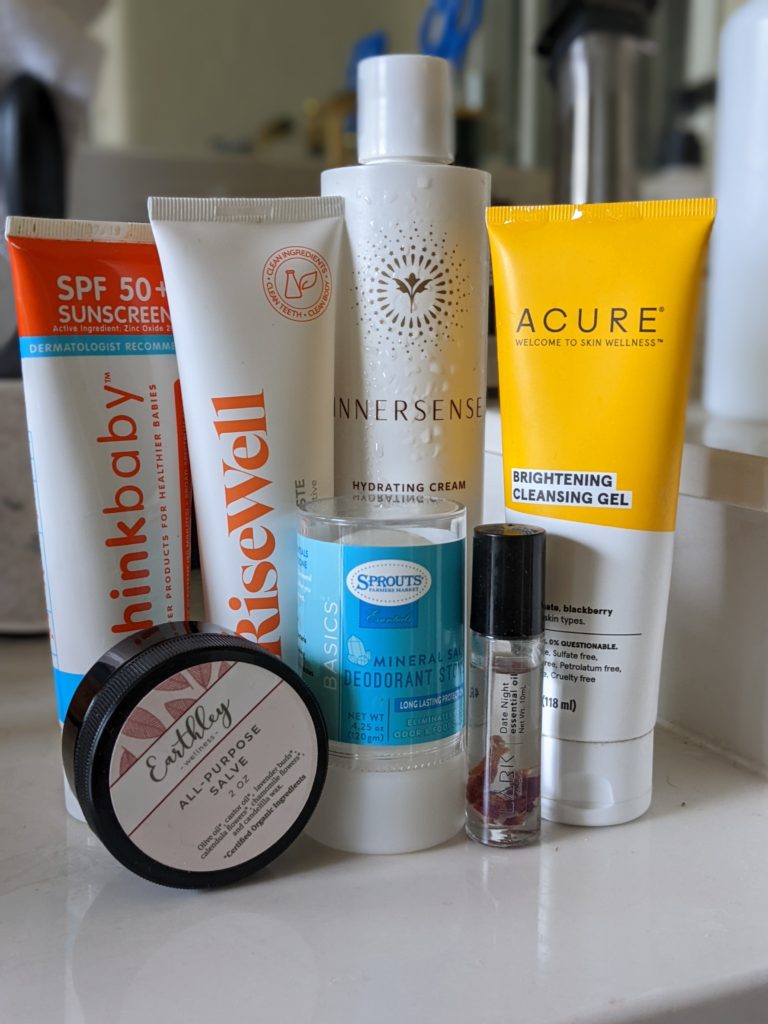Spring is here which means throwing open the windows, getting fresh air, and cleaning the house! This month, I’ve been looking at ways not to just clean the house but also ways to clean up the products and items we use on a daily basis for safer alternatives. Only 300 of some 62,000 commonly used chemicals approved for use in the US have been tested for safety.
Taking the time to examine ingredient lists, digging into sourcing, and weighing options of products is a lot of work. Take your time, move slowly through your home, and focus on those products you use most to swap out first. To make it easy, here’s a few ingredients and labels to scan for that you definitely want to avoid! This is not a comprehensive list, but it’s a solid start to get you moving in the right direction!
“All natural,” “clean,” “non-toxic”
These labels all sound great, but in reality, they mean nothing. In advertising, there is little to no regulation on terms like these, and companies will often label products with these terms, increase the price, and still include questionable ingredients. It’s on us as a consumer to be aware of green-washed companies and ask questions of the products we bring into our homes!
Fragrance
It may smell nice, but “fragrance” on the ingredient list is a catch-all item. Companies aren’t required to share their proprietary information on their scents, so the ingredient “fragrance” is a mystery concoction to consumers. Typically, fragrances are made up of tens or hundreds of chemicals manufactured from petroleum and tar. Artificial fragrances can cause asthma, skin irritation, and may also contain carcinogens, hormone disruptors, and neurotoxins. Make sure to look for both “fragrance” and “parfum” on the ingredient list, even on unscented products!
Phthalates
While often hidden within the “fragrance” ingredient, phthalates are a preservative linked to reproductive issues, developmental problems in unborn babies, and respiratory issues. Phthalates can now be found in our bloodstreams, and they’re most concentrated in women due to their vast use in cosmetic products. Phthalates can also be found in plastics, food packaging, dish soap, and even toilet paper.
Dyes
Does your detergent really need to be bright blue? Does your body wash need to be deep red? Does your refreshing drink need to be purple? Dyes don’t do anything to enhance performance of a product, but they can have negative health ramifications. Most dyes today are made from petroleum products, and 1 artificial dye can have up to 25 synthetic chemicals.
Propylene Glycol
This is a very common ingredient in personal care products because it acts as a carrier, bringing all the other ingredients in a product onto your skin. Ironically, propylene glycol is a skin irritant. It’s also been linked to cancer, hormone disruption, and neurotoxicity.
What ingredients and labels does your family avoid? What spring cleaning swaps have you made recently? Hop over to Instagram, and let me know!

